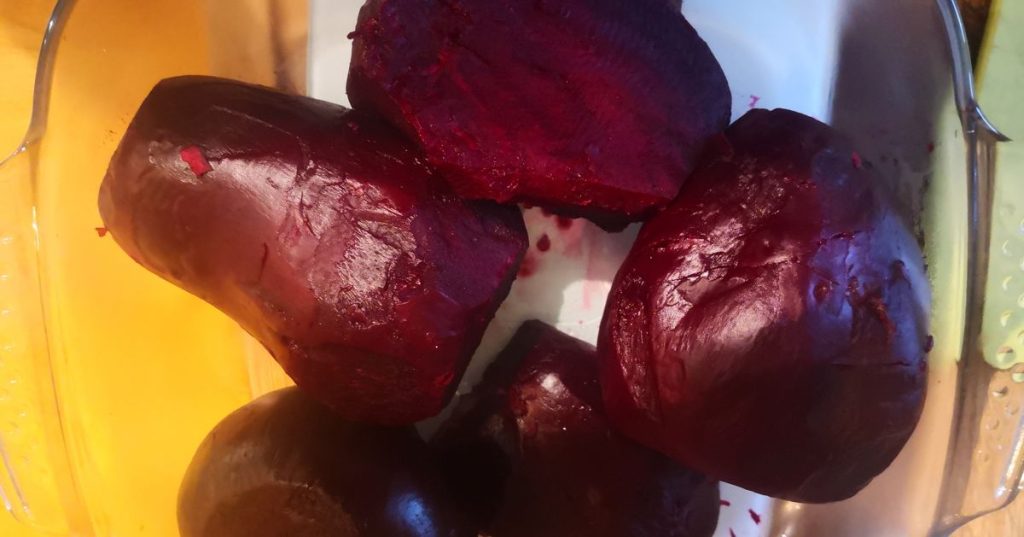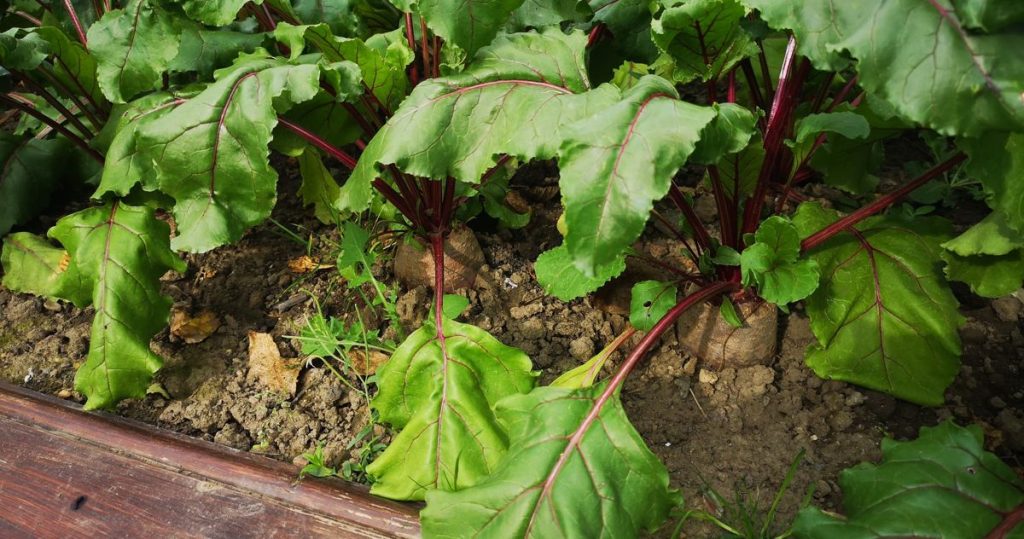Many people think that beetroot can only be cooked and used cold in salads, or pickled in vinegar. However, there are so many other ways to include this colourful and healthy super-food in your diet. They are delicious roasted, boiled, pickled, or used raw grated into salads and cakes. Beetroot can be stored and kept fresh well into winter. Find out how to grow beetroot the easy way.
10 reasons to grow beetroot
- Large amounts of cheap seeds in packets sold in most shops.
- Large seeds germinate in any compost and are easy to handle.
- You can fit approximately twenty plants in a 1-metre square growing area.
- Low maintenance, they just need watering in periods of drought.
- You can let some beetroot flower and save the seeds for next year.
- They can be stored in dry compost for months, well into winter.
- Beetroot can be peeled, chopped and frozen raw, to be roasted later.
- They can be boiled in batches, before adding to recipes or pickling in vinegar.
- You can grate them raw and add them to salads or cakes.
- They bring a vivid colour to dishes and are often described as being a ‘superfood’. Low in calories, they also contain fibre, iron, potassium and vitamin C.

Our beetroot last year – what we did
We sowed the seeds on 9th April, lifted them outside to ‘harden off’ in early May, planted seedlings in the ground on 14th May, and from July we were digging up lovely large beetroot. We sowed a second batch of seeds in late May which meant we were still harvesting beetroots well into September.

By the end of September, we had dug up all our beetroot and placed most of them into long-term storage in containers of used, dry compost, covered with a lid to keep out the light. We were still eating them in April, almost a year after we planted the first batch!
Recommended varieties: Boltardy
How to grow beetroot
What you’ll need:
- Beetroot seeds
- A couple of medium to large, deep plant pots
- Bag of compost
- Watering can or jug
- Greenhouse or under glass – somewhere protected from the weather
What you’ll do:
- In April, fill each plant pot three-quarters full with compost. Water the compost lightly.
- Let the seeds soak in warm water for 10mins, as this aids germination.
- Arrange the seeds evenly over the compost, try to leave at least a 1-inch gap between seeds.
- Cover seeds with compost so the pot is full.
- Water every week or so if the compost looks dry, but don’t overwater them.
- Once the seedlings have at least four true leaves (the first two leaves don’t count), then move them outside to ‘harden off’ for a week or so.
- Dig small holes in the ground deep enough to take their long roots. Space the holes about 20cm apart in both directions. Plant out each seedling into a hole. Water well.


Caring for beetroot
Occasional watering is all that beetroot needs, but you will find that in the first few weeks the seedlings droop and look like they are dying. Don’t worry because they are perfectly fine and will suddenly revive once they acclimatise. The roots don’t like being disturbed, which is why many gardeners sow beetroot directly in the ground, but we prefer to start them off in pots.

If you see signs of leaves being eaten, it will likely be birds so cover them with some netting until the seedlings are bigger and stronger. Birds have only attacked our beetroot once in the eight years we have grown them!
Harvesting beetroot
Harvest beetroot whenever you like. If you leave them in the ground then they will just keep growing, although growth slows as the days shorten.
Don’t feel that you have to harvest them when they are small and young (baby beetroot). Let them grow larger and you will have more to eat for your efforts! Beetroot rarely ‘go woody’. Occasionally, larger beetroot in long-term storage may need just a little bit chopping off that has hardened.
Carefully loosen the ground with a garden fork and lift. Make sure you have lifted them all by October.
Problems
As long as you water them in periods of drought, you shouldn’t encounter any problems.
Storing beetroot
Beetroot won’t stay firm for long in the kitchen, but don’t worry. From autumn through to spring, we stored beetroot for months and they were still fresh at the end. Find out how easy it is to store beetroot for months.


